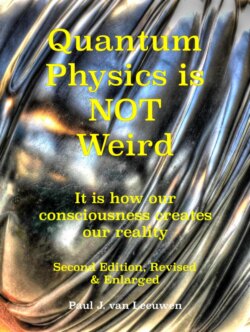Читать книгу Quantum Physics is NOT Weird - Paul J. van Leeuwen - Страница 16
На сайте Литреса книга снята с продажи.
3: The clockwork universe and the ether
Оглавление“"A scientific truth does not triumph by convincing its opponents and making them see the light, but rather because its opponents eventually die, and a new generation grows up that is familiar with it." ~ Max Planck.”
Max Planck, first quantum physicist 1858-1947
In this chapter I will introduce you to the way how light was recognized as a wave phenomenon by the discovery of interference effects. This was one of the first moments in history where Newton’s ideas of the universe were severely contradicted. The acceptance of the idea of the wave character of light gave rise to speculations about what substance would carry the wave. An intangible ether was assumed at first. Electromagnetic effects were investigated and exactly measured in the first part of the 19th century. Electric and magnetic fields were introduced as mathematical abstractions and quickly acquired the status of objectively existing phenomena.
Electromagnetic waves traveling with the velocity of light were predicted by Maxwell’s theory and were soon confirmed by experiment. Sophisticated attempts to measure the speed at which the earth would travel through the presumed ether failed utterly and confirmed thereby the predicted constancy of the speed of light, always exactly 186,282 miles per second regardless of the position and the movement of the observer.
At the brink of the twentieth century Max Planck solved the enigma regarding the radiation of a hot body by assuming exchange of electromagnetic energy in discrete amounts – quanta. His solution spelled the ultimate doom for the Newtonian vision of a 100% material universe.
